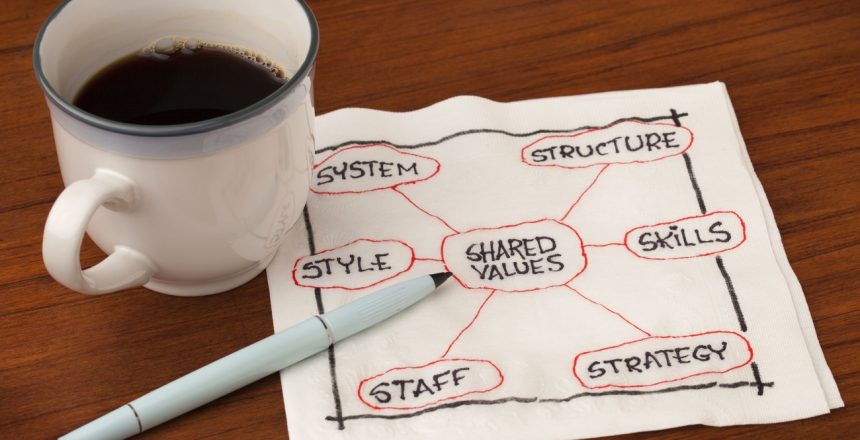As we all find ourselves adjusting to the new normal of working remotely under the COVID-19 stay-at-home order, I’ve spent a good portion of my newfound free time re-watching shows from my childhood. Ah, good times, but I digress. One show that has surprisingly provided me with many newfound insights into organizational development challenges is the hit show from the 70s, The Brady Bunch. Now, if you’re scratching your head trying to figure out how a show about a blended family from over five decades ago can add valuable insights into today’s organizational issues, read on.
One famous line from the show came from the middle sister, Jan, and went something like, “it’s always Marcia, Marcia, Marcia!”. In much the same way that Jan often cried that Marcia was getting all the attention, so too does leadership often get all the attention when organizational challenges arise. The challenge with this approach is that it often neglects to consider other crucial, and usually, interlocking components such as organizational culture and leadership development.
Despite the important role leadership plays in driving change within a company, there’s also a need to assess other elements that may be present when organizational issues arise.
As I found myself binge-watching episode after episode for several weekends in a row, I recognized a shift in perspective – likely due to my many years of organizational development training. In times past, I admired two families’ ability to come together, albeit not seamlessly, in one household where most conflicts were handled with much comedic relief. This time around, I wondered if the desired family culture of parents, Mike and Carol, was intentionally decided before the two families became one and then continually nurtured and enforced, or if it happened organically.
In many cases, a lack of attention to the type of culture being cultivated is the culprit behind organizational issues like poor morale, high employee turnover and low productivity. In other instances, companies elect to take a lackadaisical approach of just “letting things resolve themselves,” often to their detriment. Every organization has a culture; its success is directly tied to its leaders’ willingness to enforce it. Culture ensures that a shared belief system serves at the organization’s compass, or true north. Mike and Carol led their family by example – talking through challenges together with a set of values that included honesty, owning one’s mistakes, inclusivity, collaboration and teamwork. Each episode featured the siblings coming together to brainstorm solutions to problems, encouraging one another and working hard to achieve their goals.
Similarly, organizational leaders must empower the Mikes and Carols on their teams to model behaviors that others throughout the organization should emulate. They must invest the appropriate resources into building the culture they desire.
As the show progressed through its various seasons, Greg Brady, the eldest of the Brady children, found himself positioned as the leader of his siblings. As a result, in many cases, Greg would serve as the representative spokesperson on behalf of the other children. He used his craftiness to devise plans that he lobbied the other children to buy into, often with much success. Based on most “natural family dynamics,” these operating practices might seem typical, normal even, and would go unnoticed. However, I walked away from the show with much more profound insights. Greg was being groomed as the eventual leadership successor of the family. He mirrored the practices and techniques that his parents had long employed. In this way, his natural leadership abilities were honed and developed, and the desired culture remained, grew and thrived.
Mike, Carol, and now Greg, established what organizations would refer to as a leadership development system. They incorporated the voices of all and began developing leadership at every level – even amongst the youngest two siblings. I couldn’t help but wonder what these informal policies and processes at play would look like in organizations. However, I soon realized that the Bradys operated much as any organization should. Through family meetings and gatherings, they formed developmental relationships where mentors, or in this case, the parents and older siblings, supported the rest of the group’s learning and development. Through shared lived experiences, they worked through challenging issues, increasing their ability to adapt and lead in various settings. Through one-on-one chats with parents, other siblings, and even Alice, their beloved housekeeper, they received critical, honest feedback about their behavior, skills and abilities and how their actions impacted others.
These three things – relationships, developmental assignments and feedback processes – are the key components of any leadership development system, and they too must be mirrored by organizational leaders.
In a nutshell, while leadership is a crucial component to organizational success, it hinges on the leadership approach one takes, the organizational culture created and how future leaders are developed. Companies can no longer take a passive approach that solely blames leadership when organizational challenges arise. Instead, organizations must conduct regular internal audits to identify if leadership is the root cause or a symptom of a more significant issue. After all, it worked for the Brady bunch.

